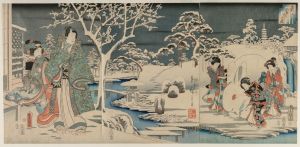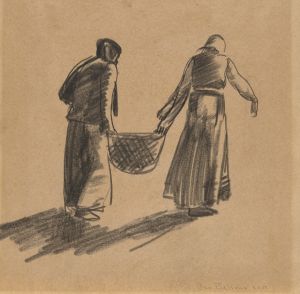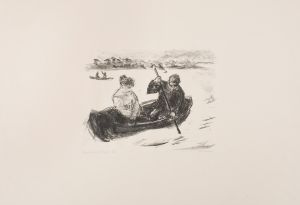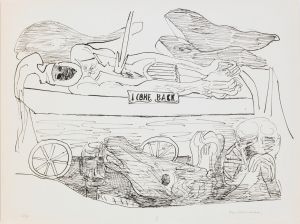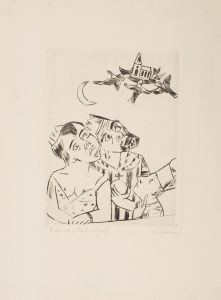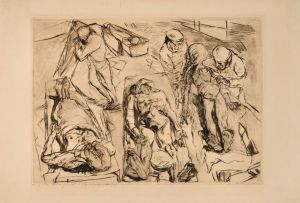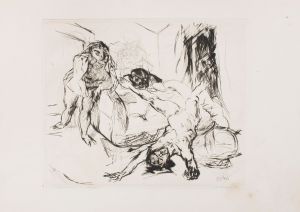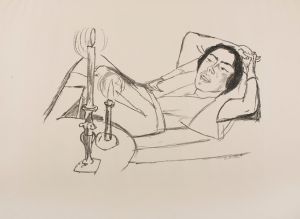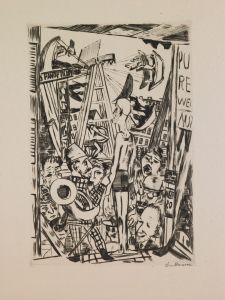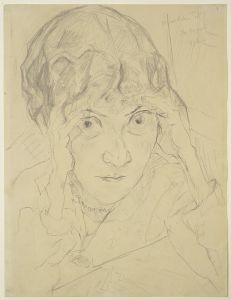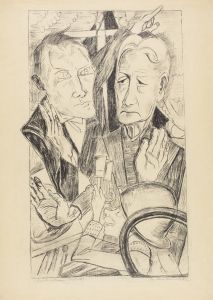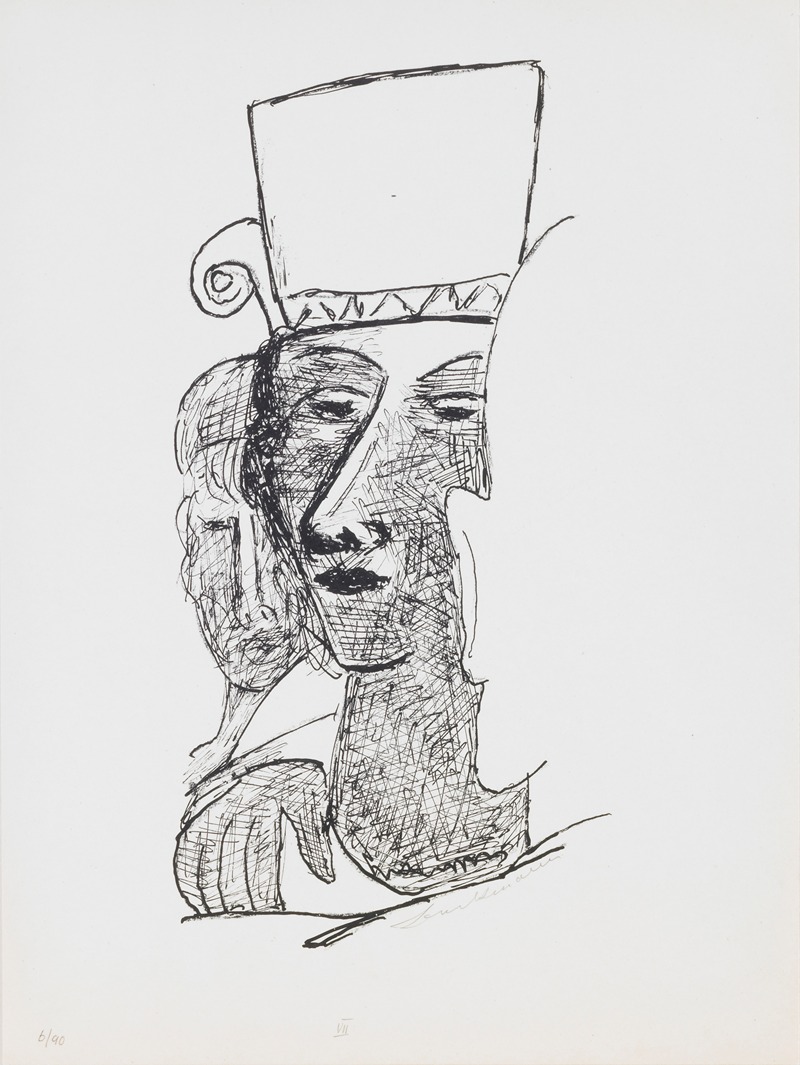
Dancing Couple, plate 7 from the portfolio ‘Day and Dream’
A hand-painted replica of Max Beckmann’s masterpiece Dancing Couple, plate 7 from the portfolio ‘Day and Dream’, meticulously crafted by professional artists to capture the true essence of the original. Each piece is created with museum-quality canvas and rare mineral pigments, carefully painted by experienced artists with delicate brushstrokes and rich, layered colors to perfectly recreate the texture of the original artwork. Unlike machine-printed reproductions, this hand-painted version brings the painting to life, infused with the artist’s emotions and skill in every stroke. Whether for personal collection or home decoration, it instantly elevates the artistic atmosphere of any space.
Max Beckmann's "Dancing Couple, plate 7 from the portfolio ‘Day and Dream’" is a notable work within the oeuvre of the German painter and printmaker. Beckmann, born on February 12, 1884, in Leipzig, Germany, is recognized as one of the most important artists of the 20th century, known for his unique style that blends elements of Expressionism, New Objectivity, and a personal form of modernism.
The portfolio "Day and Dream" was created in 1946, during a period when Beckmann was living in exile in the United States. He had fled Germany in 1937 due to the oppressive Nazi regime, which had labeled his work as "degenerate art." This portfolio is a collection of lithographs that reflect Beckmann's introspective exploration of themes such as identity, existentialism, and the human condition, often characterized by a sense of tension and complexity.
"Dancing Couple" is one of the plates from this portfolio and exemplifies Beckmann's distinctive approach to composition and form. The image typically features a couple engaged in a dance, rendered in Beckmann's characteristic bold lines and dynamic forms. His figures often possess a sculptural quality, and the use of space and perspective can create a sense of movement and emotional intensity. Beckmann's work frequently includes symbolic elements, and while specific interpretations of "Dancing Couple" may vary, it can be seen as a reflection on human relationships and the interplay of joy and melancholy.
Beckmann's art is often noted for its rich use of symbolism and allegory, drawing from a wide range of influences, including mythology, literature, and his own personal experiences. The "Day and Dream" portfolio, including "Dancing Couple," is no exception, offering a window into Beckmann's complex worldview and his response to the tumultuous events of his time.
Throughout his career, Beckmann was deeply concerned with the human experience, and his work often grapples with themes of suffering, resilience, and the search for meaning. His time in the United States marked a period of both professional success and personal reflection, as he continued to develop his artistic vision in a new cultural context.
"Dancing Couple" and the other works in the "Day and Dream" portfolio are significant not only for their artistic merit but also for their historical context. They represent Beckmann's ongoing dialogue with the world around him and his commitment to exploring the depths of human emotion and experience through his art.
Max Beckmann passed away on December 27, 1950, in New York City, leaving behind a legacy that continues to influence and inspire artists and art lovers worldwide. His work, including "Dancing Couple," remains a testament to his skill as an artist and his profound engagement with the complexities of life.





